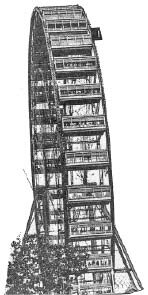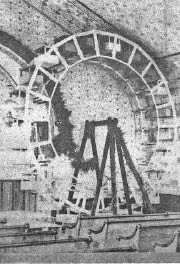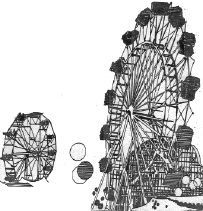
Discover rewarding casino experiences. 
|
That merely meant that exhibits could be better polished and more countries from around the world had time to come and show their uniqueness. And for George Washington Gale Ferris to have more time to tease potential visitors to the Expo with the growing wheel. There were other wheels long before Ferris’ in Europe and Asia but of a much smaller size. One had, in fact, been put together in the United States in 1870 by J.W. Graydon but it was not the colossus that Ferris’ was. Why did Ferris build such a gigantic wheel, so much bigger than any other? Anger, that’s what. The recently built French engineering marvel, the Eiffel Tower in Paris awed everyone, justifiably. George Ferris attended a banquet at which a speaker continued to go on and on about how clever the French were to have constructed such a feat in steel. George got bored hearing about what the Frenchies could do so he vowed then and there to build something even better. And as the idea began to churn out he wondered to himself, why shouldn’t it be something that moved, too? Throughout the night Ferris sketched and doodled, thinking that while Americans didn’t lack the ability. They just didn’t have incentive until now. It must be stupendous and do something no other invention did. He thought of Graydon’s wheel for some reason. “Pop” went the light bulb of the idea. Two enormous perpendicular wheels turning with “cars” between to carry people!
The wheel would become 264 feet in height and hold sixty cars, there’d be thirty-six feet between the wheels and be thirteen feet deep to carry sixty passengers each. Fully loaded, there’d be 2,160 passengers, three cars were able to be loaded at once (see illustration here, Old Farmer’s Alamanac). It would take twenty minutes to make one revolution. At its zenith the Ferris wheel would be as high as a thirty story building setting as it did on its sturdy base. The wheel, of course, couldn’t have been developed until other inventions and developments had been accomplished—like steel. And the special machines and tools needed to create the parts. Special engineering techniques had to have evolved. Treating the steel joints for expansion and contraction was a specialty of the engineering processes. The axle on which the entire thing revolved was 32 feet in diameter and forty-five feet long. It weighed seventy tons. The weight of the two one hundred forty foot towers was three hundred tons. There were eight foundation bases, each twenty foot square and thirty-five feet high of solid concrete. Two thousand two hundred tons of pig iron went into making the wheels. One single one thousand horsepower engine drove the entire apparatus though there was a second in reserve. It is estimated that 92% of those who visited the Columbian Exposition rode the Ferris wheel. It was THE thing to do. Long lines waited for hours to make the trip. The statistics of its make-up are as awesome as the wheel itself. It cost thirty cents to ride the Ferris wheel, ten times what the price of a ride was on the merry-go-round but well worth it because you spent twenty minutes at the top of the ride and could see for miles. Following the close of the Exposition, hundreds of thousands could still ride because the magnificent machine was kept in motion for some weeks to the delight of those who hadn’t gotten to the fair or who came again. Most of the buildings that had housed a miniature global world were made of temporary materials and were torn down except for one but which was stripped of its shell down to the steel frame then, using permanent materials was constructed to become the Museum of Science and Industry, still in use.
At the time of its disassembly, the Ferris wheel’s price for such was $250,000 with shipping costs to be sent to St. Louis where it was put up again to capture the attention of a new audience. But for some reason there were few comers and admissions were barely equal to the costs. Somewhat ignominously, it was put up for bids. It was so huge and unwieldy no one would tackle the job so the marvel machine was dynamited. Still the twisted pieces of steel took much time and energy to cut into useable pieces and a foundry had to do the thankless job. Such an end. Meanwhile, J.W. Graydon who had inspired George Ferris, remained quietly in the background but he was also busy. He designed a wheel for a London amusement park. It had forty cars, ten of which were elaborately furnished and ornately draped. An observation platform was affixed to five smoking cars. The axle was hollow and so long that people could walk through it—and did for a shilling a piece. Once a creation as marvelous as Ferris’ became reality, others tried to best it but none was so awesome as his in 1893. The most sought after wheel became a portable one . . . One that could be taken down in a short amount of time for the day or two of a rural fair. Dismantling one in a few hours was the test. Give an American a problem and it’s solved, don’t ya know! William Sullivan of Roodhouse, Illinois came up with the solution. It was only 45 feet high in contrast to Ferris’ 264 feet but it was sufficient. It had twelve cars that held but two each. Enough to enjoy the scenery. By 1906 Sullivan incorporated his wheel company and has since constructed hundreds of them to be a major manufacturer. The “Eli Bridge Co.” is the name to remember today, for some reason. Bridge? Wheel? Whatever: Hang on tight.
|






